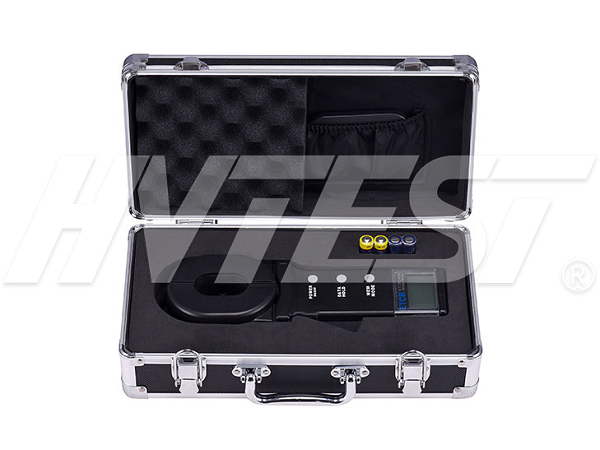Detection Technology
How to use the clamp ground resistance tester
The traditional grounding resistance measurement method is the voltage and current method.
Ease of operation
The traditional method must trip the grounding wire and hit the auxiliary grounding pole.
The ground electrode to be tested is to be separated from the grounding system; and the voltage electrode and current electrode must be driven into the soil at the specified distance as auxiliary electrodes for measurement.
With a clamp-type ground resistance tester, you only need to clamp the clamp meter's jaw around the ground wire to be tested, and the ground resistance value can be read from the LCD screen.
Measurement accuracy
The accuracy of the traditional measurement method depends on the position between the auxiliary electrodes and the relative position between them and the grounding body. If the position of the auxiliary electrode is restricted and cannot meet the calculated value, it will cause the so-called distribution error.
For the same grounding body, different auxiliary electrode positions may cause the measurement results to have a certain degree of dispersion. And this dispersion will reduce the credibility of the measurement results.
There is no auxiliary electrode when measuring by the clamp-on ground resistance tester, and there is no error in the arrangement. When the test is repeated, the consistency of the results is good.
A standard test ring is attached. When measuring, the clamp ground resistance tester can measure the standard test ring first. If the reading is accurate, then the measured ground resistance value is credible.
Adaptability to the environment
The traditional method must drive two auxiliary electrodes with relative position requirements, which is the biggest limitation of using the traditional method.
The problem is that with the development of urbanization in my country, no soil can be found around the tested ground, and they are all covered by cement. Even if there are so-called green belts, street gardens, etc., their soil is often separated from the soil of the earth. What's more, the relative position of the auxiliary electrode is required when the auxiliary electrode is hit by the traditional method. It is more difficult to find soil with distance requirements in most cases.
When using a clamp-on ground resistance tester, there are no such restrictions. Although, from the measurement principle, the clamp ground resistance tester must be used in the case of ground loops, but as long as the user can effectively use your surrounding environment, the clamp ground resistance tester can measure single-point grounding. system.
other
In some cases, the clamp-on ground resistance tester can measure ground faults that cannot be measured by traditional methods.
For example: In a multi-point grounding system (such as poles and towers, etc.. In addition, some buildings also use more than one grounding body). Although the grounding electrode of their grounding body is qualified, the connection line between the body and the overhead ground wire may be possible After using for a long time, the contact resistance is too large or even the circuit breaks. Although the grounding resistance of the grounding body meets the requirements, the grounding system of the clamp-on ground resistance tester is not qualified. It is impossible to measure this situation by traditional methods. Clamp-type ground resistance tester can be used to measure correctly, because clamp-type ground resistance tester measures the combined value of grounding body resistance and line resistance.
Operation and use of relay protection tester | 2020/11/11 | reading750time Why does the DC resistance tester make a noise? | 2020/11/10 | reading744time return


